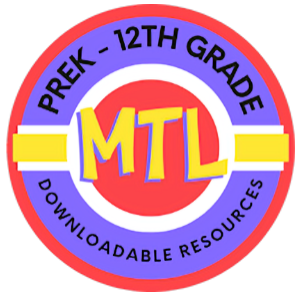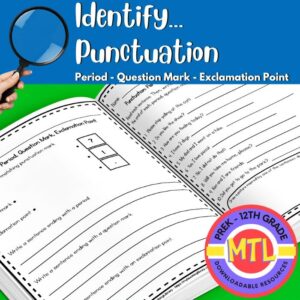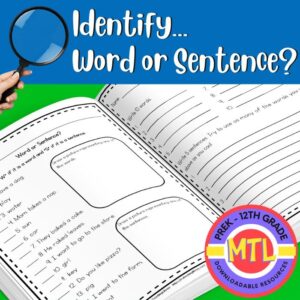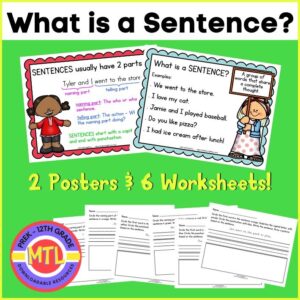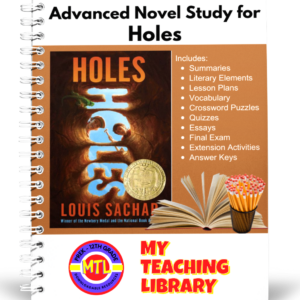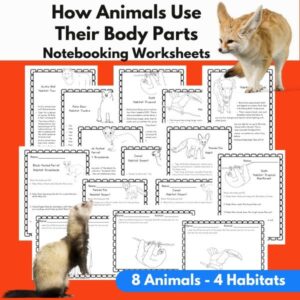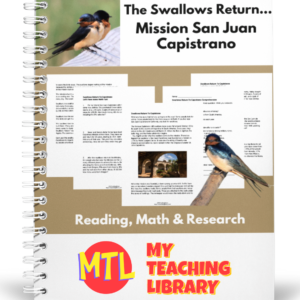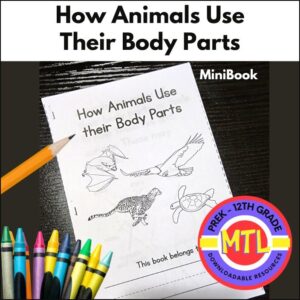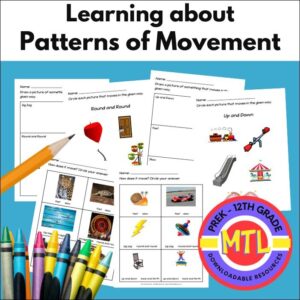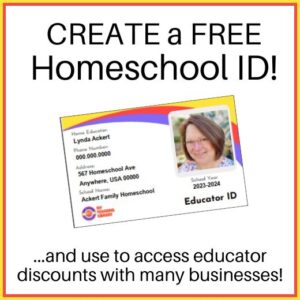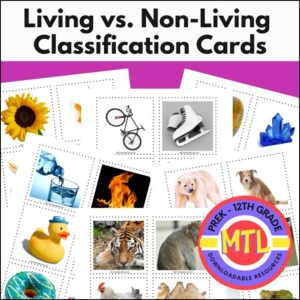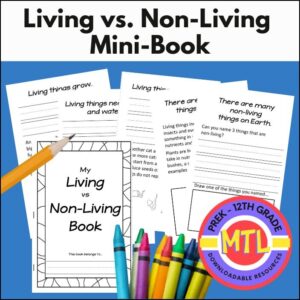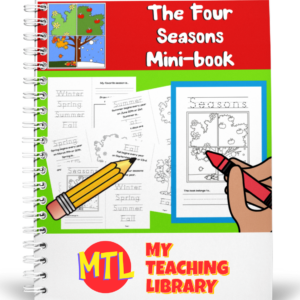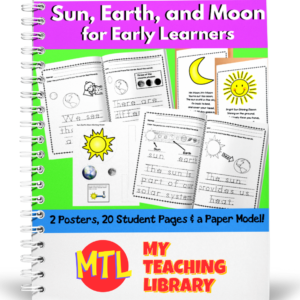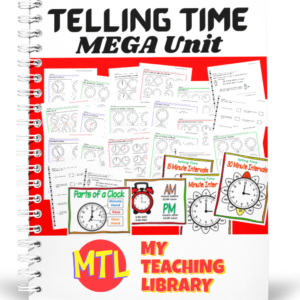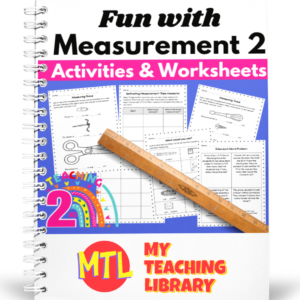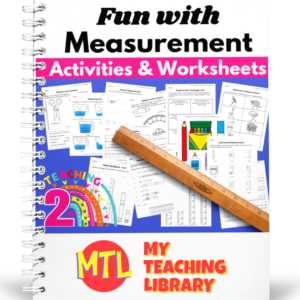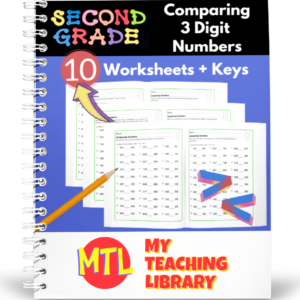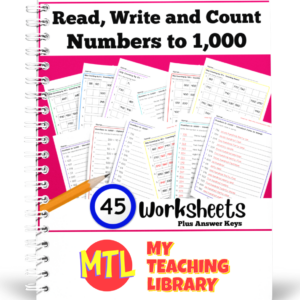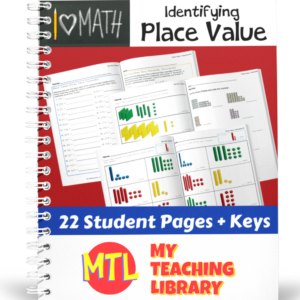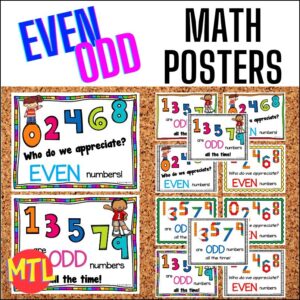Showing 81–100 of 297 results
-
$1.50Buy Now
An early grammar skill for students to learn is to identify by name three types of punctuation: a period, question mark and exclamation mark. Here are two worksheets that will help students demonstrate their knowledge and ability to do just that!
-
$1.50Buy Now
An early grammar skill for students to learn is to identify a word versus a sentence, using those terms. Here are two worksheets that will help students demonstrate their knowledge and ability to do just that!
-
$2.25Buy NowThis “What is a Sentence?” resource includes two colorful teaching posters and 6 different student pages for students to demonstrate what they have learned! Students will learn the definition of a simple sentence, that a sentence has two parts, the first word is capitalized and always ends with punctuation.The first 3 student pages will give a simple sentence and students are asked to identify (circle) the first word, underline the capital letter of that first word and circle the punctuation. They will then copy the sentence and draw a picture to represent the sentence.The last 3 student pages will give a simple sentence and students are asked to identify both the ‘naming part’ and the ‘telling part’ of the sentence. They will then copy the sentence and draw a picture to represent the sentence.
-
$9.00Buy Now
This is an in-depth novel study of Louis Sachar’s Holes in which students will delve into literary elements of the book, analyze various topics and themes, write arguments and opinions, conduct research and more! This unit is designed for advanced 6th-8th graders and High School students.
(See description below for more details) -
$3.00Buy Now
In this unit study, students will learn how 8 different animals (4 different habitats) use many of their body parts to live and survive. For each animal, students will be given a fact sheet, a short answer worksheet and a worksheet on which they will label and describe the specific body parts and how they are used.
Animals covered in this unit are:
– Desert Habitat: Camel, Fennec Fox
– Grasslands: Black-footed Ferret, Bison
– Tropical Rainforest: Sloth, Toucan
– Tundra: Polar Bear, Arctic Wolf -
$3.00Buy Now
This unit is designed to give students practice reading and answering questions on the given scientific and historic informational provided in the text. The main subject of the text: Spring migration of swallows returning to the historic Mission San Juan Capistrano. After reading, students will be asked to answer multiple choice and short answer questions.
For further expansion of the lesson, there are 6 math word problems and a research, writing assignment.
Readability Grades:
- Flesch-Kincaid Grade Level: 6.1
- Gunning Fog Index: 7.7
-
$2.50Buy Now
A fun to create, Science mini-book teaching students how different animals use their body parts as tools to live and survive! Once students finish creating this 10 page mini-book, they will be able to give examples of how 7 animals use their body parts to get nourished, move within its environment and even stay protected from predators!
Animals included in this project are the cheetah, bat, loggerhead turtle, badger, kangaroo, deer and tundra swan. There is also a image of a wolf with showing various body parts often used to accomplish an animal’s survival.
Students will color, draw and write to complete the book.
-
$1.50Buy Now
Learning about various patterns of movement is an important Kindergarten and 1st grade Science concept that is introduced in these worksheets! The movements covered include:
– fast / slow
– ziz zag
– round and round
– straight line
– up and down
– back and forth -
FREEBuy Now
Create your very own homeschool ID card with this FREE download. All you need is to download this template, open with a pdf program, click the various fields to type in your information, upload a current photo and print!
-
$2.25Buy Now
Here is a set of 36 science classification cards to give students the ability to classify living and nonliving things! These cards include beautiful color photos of 36 different items plus two sets of classification mats.
-
$2.25Buy Now
This living vs. nonliving booklet is perfect for kindergarten and 1st grade students just learning the science concept. It includes a cover page and 5 inside pages that will teach students that living things grow, need food and water as well as reproduce.
-
$2.50Buy Now
Students will learn about the four seasons, (winter, spring, summer and fall) while creating a cherished 12 page science mini-book! For each season, students will learn when that season begins and a fact about it.
Example: For spring, students will learn that spring begins every year on March 19th or 20th and that spring is warm and flowers begin to grow. Whey will be coloring, as well as tracing words and pictures! (Some seasons have more than one date when it may begin, as you see in the spring example. This allows this resource to be used every year and can be a spring board to a discussion as to why this is true if appropriate.)
-
$3.00Buy Now
This unit is designed to help early learners learn about the sun, earth and moon through fun, engaging activities! Students will learn that the sun supplies heat and light to the earth, that the moon reflects light from the sun and rotates around the earth, that there are different phases of the moon (specifically in this unit: full, half and crescent), and more! Includes:
– 2 posters
– 20 student pages
– 1 interactive model craft -
$5.25Buy Now
Telling time is an important Math skill to learn in the 1st, 2nd and 3rd Grades. This math unit will give you everything you need to teach this skill! This resource includes:
– 5 Posters
– 84 Student Pages (See detailed description below)
– Answer Keys -
$2.50Buy Now
Hands-on activities and worksheets designed for 2nd grade students learning measurement skills such as using a variety of measurement tools (ruler, yardstick, meter stick and tape measure), finding two different measurements for objects (inches and centimeters), estimating measurements, and solving measurement word problems (with bonus if converting inches to feet and inches).
-
$3.50Buy Now
Hands-on activities and worksheets designed for students learning measurement skills such as:
- – Reading a ruler and using to measure objects (inches and centimeters)
- – Determining the best measurements (inches, feet, yards, miles / ounce, pounds / centimeter, meter, kilometer)
- – Tools of measurement
- – Reading a measuring cup
- – Comparing objects that have been measured
-
$1.75Buy Now
This set of no prep, 10 worksheets will give students the practice they need to compare three digit numbers. Students will be asked to use greater than, less than or an equal sign (<, > or =) for each pair of numbers. Each worksheet includes 30 number pairs to compare. Answer keys are included.
-
$3.50Buy Now
This resource will give students the opportunity to:
- – Display their understanding that the three digits of a three-digit number represent amounts of hundreds, tens, and ones; e.g., 706 equals 7 hundreds, 0 tens, and 6 ones by converting numbers to expanded form as well as full expanded form (numbers to 1000)
- – Show their ability to skip count by 5s, 10s, and 100s (numbers to 1000)
- – Read and write numbers to 1000 using base-ten numerals, number names, expanded form and full expanded form
This resource includes 45 worksheets plus answer keys:
- 5 Worksheets by 5s – Counting up
- 5 Worksheets by 5s – Counting down
- 5 Worksheets by 10s – Counting up
- 5 Worksheets by 10s – Counting down
- 3 Worksheets by 100s – Counting up
- 2 Worksheets by 100s – Counting both up and down
- 5 Worksheets – Given words to covert to standard form
- 5 Worksheets – Given standard form to covert to words
- 5 Worksheets – Given expanded form to covert to standard
- 5 Worksheets – Given standard form to convert to full expanded notation
-
$3.25Buy Now
Help students learn to identify place value with this math resource! With 22 progressive student pages, students’ skill and understanding will increase.
The unit begins with students visually counting ‘ones’, then ‘tens’, then ‘hundreds’ using number blocks. Next, they proceed to identifying the place value of given numbers, beginning with 2 digit numbers (identifying ones and tens), then 3 digits (identifying ones, tens and hundreds) and finally 4 digits (identifying ones, tens, hundreds and thousands).
Perfect for use with multiple ages / grades or for differentiation. (Grades: 1st. 2nd and 3rd)
-
$2.25Buy Now
Teaching students how to identify even and odd numbers? Here is a set of 12 posters (6 different sets of 2) that will be a great addition to your classroom decor.
